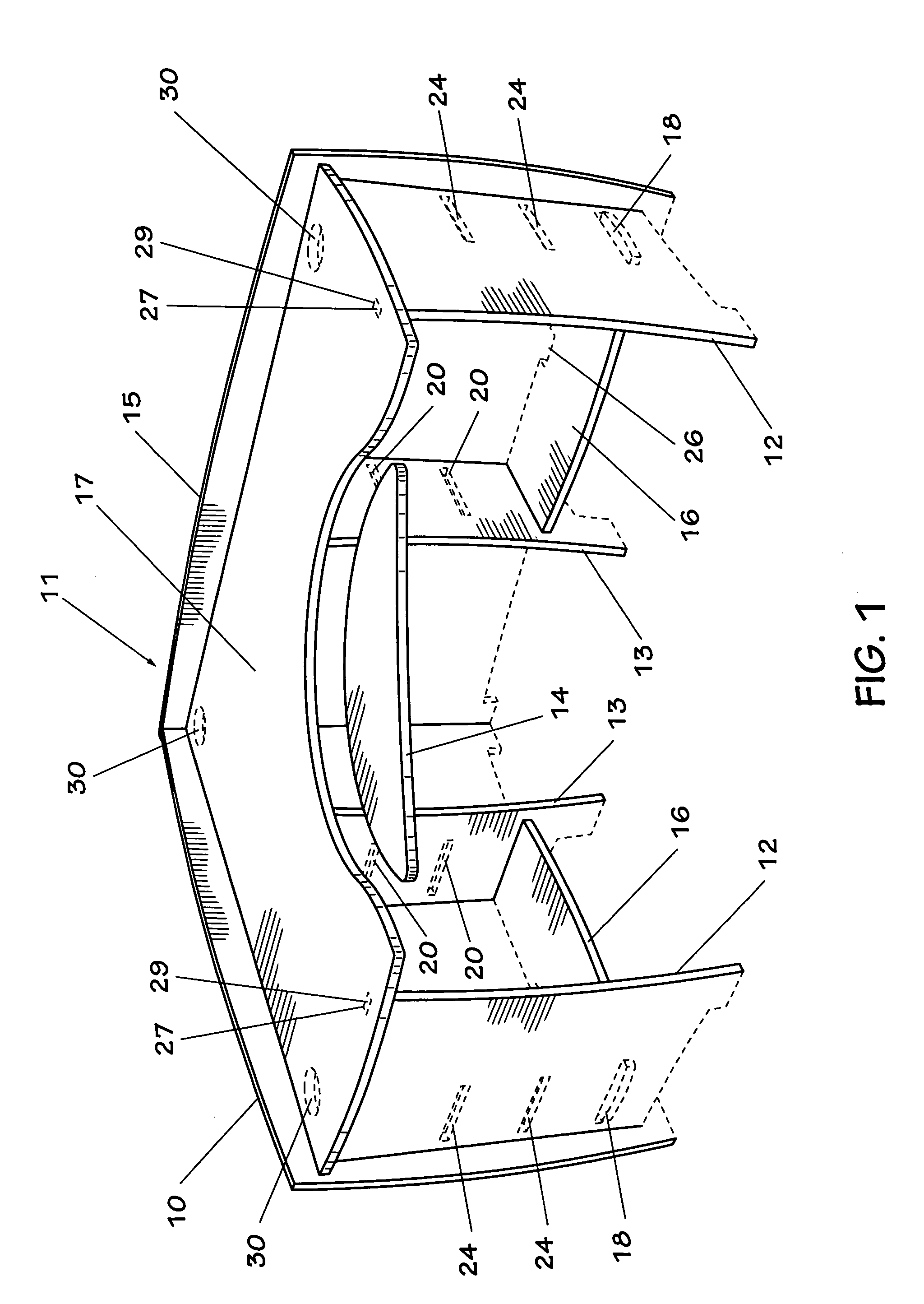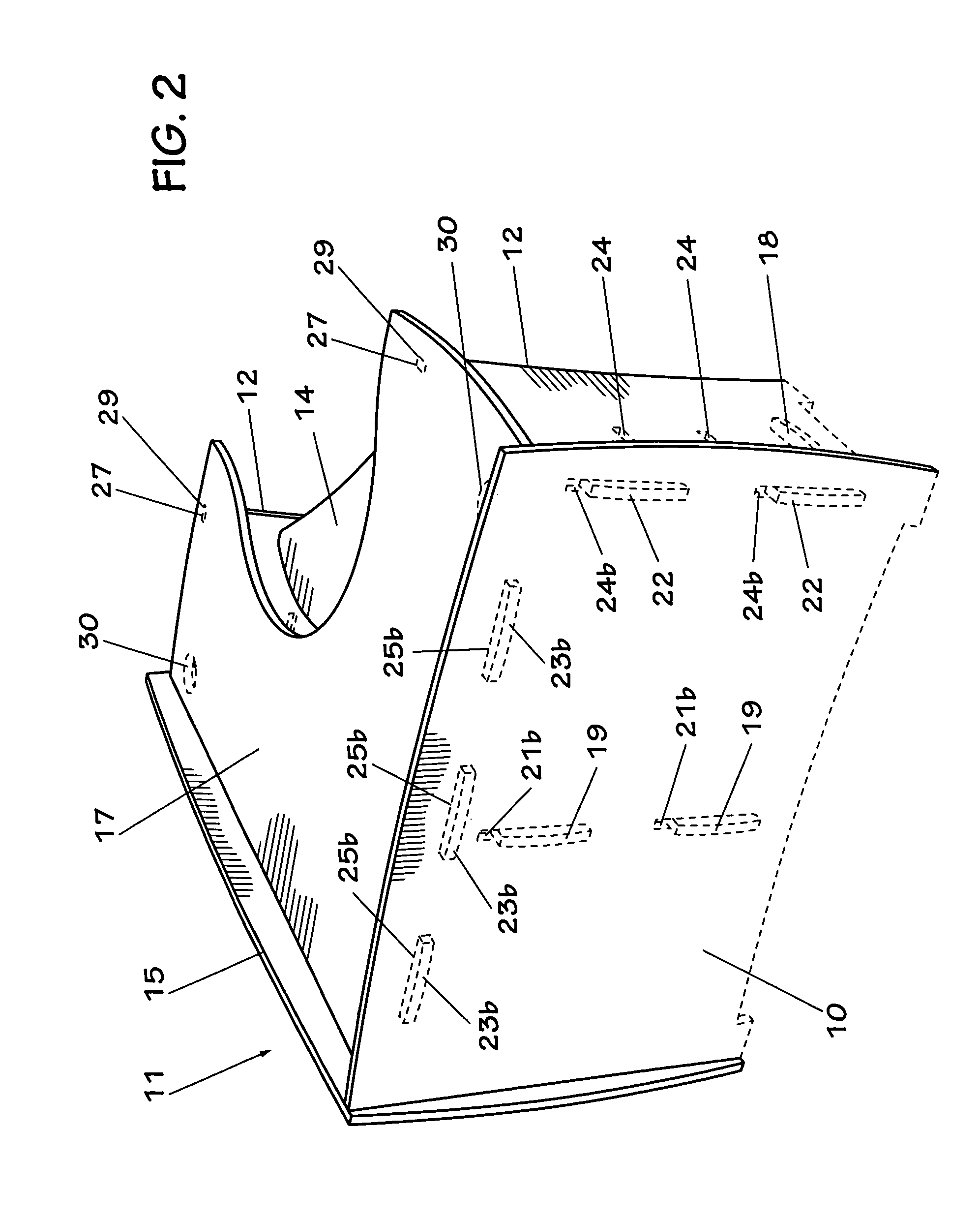Modular furniture system
a modular furniture and furniture technology, applied in the field of modular furniture systems, can solve the problems of inability to meet exact or uniform raw material specifications, inability to accurately and uniformly manufacture products, and inability to ensure the accuracy of raw material specifications, etc., to achieve the effect of convenient assembly and secure assembly of products
- Summary
- Abstract
- Description
- Claims
- Application Information
AI Technical Summary
Benefits of technology
Problems solved by technology
Method used
Image
Examples
Embodiment Construction
[0078]Referring to FIG. 1 in the drawings, a desk 11 made in accordance with the modular furniture system of the present invention is illustrated. Desk 11 is an example of the type of furniture that can be assembled with from the interlocking components of the present invention. As explained herein, the modular furniture system of the present invention allows a user to assemble, disassemble, and reconfigure various interchangeable and reversible components into a large variety of pieces of furniture, such as tables, generally rectangular desks, corner desks, desk returns, desk extensions, desk bridges, hutches, bookcases, end tables, and others.
[0079]Desk 11 is a corner desk interlockingly assembled from a plurality of wide vertical side supports 12, a plurality of narrow vertical side supports 13, a long vertical rear support 15, a short vertical rear support 10, and a desk work surface 17. Optionally, desk 11 may include a plurality of shelves 16 and a keyboard tray 14. Each wide ...
PUM
 Login to View More
Login to View More Abstract
Description
Claims
Application Information
 Login to View More
Login to View More - R&D
- Intellectual Property
- Life Sciences
- Materials
- Tech Scout
- Unparalleled Data Quality
- Higher Quality Content
- 60% Fewer Hallucinations
Browse by: Latest US Patents, China's latest patents, Technical Efficacy Thesaurus, Application Domain, Technology Topic, Popular Technical Reports.
© 2025 PatSnap. All rights reserved.Legal|Privacy policy|Modern Slavery Act Transparency Statement|Sitemap|About US| Contact US: help@patsnap.com



